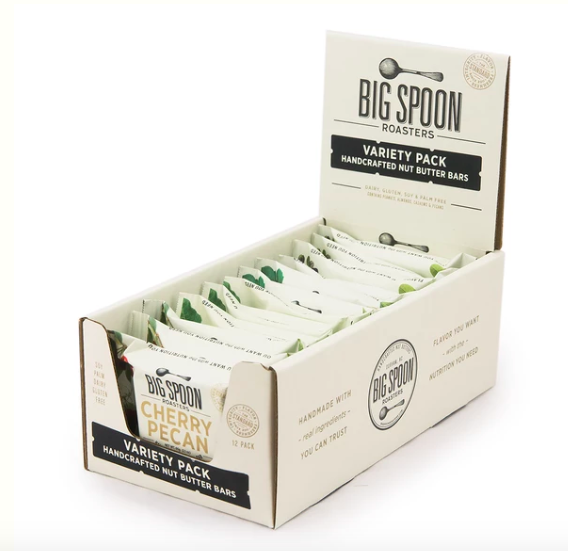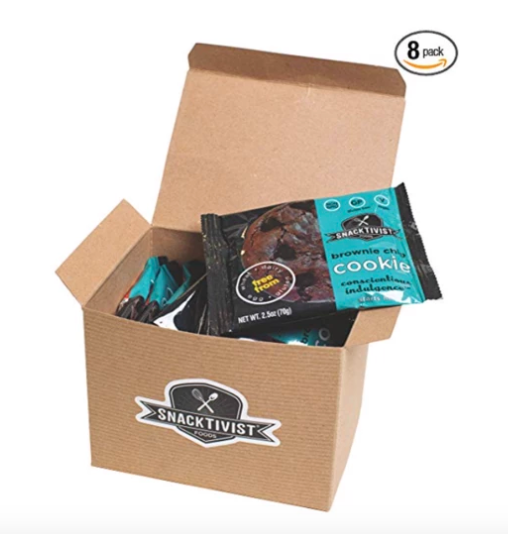Snacking has become big business. The salted snack segment alone is project to reach $109 billion in global sales by 2025. That’s a lot of nuts, bars, and trail mix!
In today’s fast-paced world, more consumers are eating smaller meals, more frequently out of convenience. For many grabbing a quick snack whether it’s a granola bar or all-natural jerky has even replaced our most important meal of the day: breakfast.
Having been labeled as unhealthy eating (think a big bag of ripple potato chips) in the 80s and 90s, eating snacks like have largely evolved with more companies even offering healthy snacks that serve as alternatives for regular meals.
From Baby boomers, Gen Xers, millennials, and even Gen Zers, smaller meals and snacks throughout the day has become habitual as eating three square meals per day becomes less common. Childhood dietary trends are also on the rise as three snacks per day becoming the norm with about 27% of a child’s total calorie intake coming from this meal source.
In today’s snack food report, we evaluate consumption trends of different demographics within the United States and globally to identify what the future looks like for this rapidly growing segment.

Snack Food Market Consumption Trends
The global snack food market is expected to gain at a CAGR of 5.34 percent from 2019 to 2024. (Mordor Intelligence)
Snacking has taken the place of traditional meals like breakfast, lunch, and dinner unlike in the past where snacking was made in between meals. (Packaged Facts)
In 2019, the average per capita consumption stood at 2.9 kg. (Statista)
The healthy-ingredient snack market’s steady growth rate has surpassed the overall food and beverage sales growth in the last five years. (Packaged Facts)
One of the dominant segments in the snack food industry, salted snacks are poised to grow at a rate of 5.6% in size. (Market Research.com)
According to a study, a consumer’s choice for snack foods isn’t limited to just taste. Today, they also look to satisfy certain sensory elements such as; heat, texture, and aromatics. (NPD Group)
Fueling the ready-to-eat food market is the rise in demand for convenient, on-the-go foods brought about by rapid urbanization, improved consumer lifestyle, and high disposable income. (Mordor Intelligence)
Industry Report: 37 Energy Drink Consumption Statistics and Trends
In 2019, the average price per unit of the snack food segment stands at $7.52. (Statista)
Nutritious and tasty snacks that you can eat on the go are new product developments driven by health-conscious consumers. In fact, Pepsi Co. is looking to add more vegetables, protein, and add whole grains into their snacks while reducing saturated fats and sodium. (Euromonitor International)
A large variety of healthy snacks continue to be the trend in the market, while busy consumers choose availability and portability. (Packaged Facts)
In 2019, the average per person revenue in the snack food industry amounted to $21.97. (Statista)
In a recent survey, 36 percent of consumers said they preferred snacks with “green” manufacturing techniques. This idea of sustainability came from younger people aged 18 to 24 who want environment-friendly packaging. (NOSH)
Snacking Statistics in the United States
Japan’s matcha powder and India’s tikka masala and cardamom are just some of the Asian flavors currently making waves in the U.S. (Food Safety Magazine)
Close to 386 billion ready-to-eat snacks were consumed by Americans last year, most of which were chowed down between breakfast, lunch, and dinner. The increase in snack food consumption was made during the daytime, some of which were used as meal replacements. (NPD Group)
Companies in the U.S. have experienced a boom in fruit and vegetable snacks like baby carrots and grapes. These produce are individually packed as fruit cups, dried fruit, minute fresh smoothies, and nut snack packs. (Nielsen)
Increasing its value share for the third consecutive year to 2018, Frito-Lay Co. has continued to dominate the “Salty snack” category. The success is driven by omnipresent brands such as Doritos, Lay’s, Ruffles, and Cheetos which has been a favorite among snackers. (Euromonitor International)

95% of American adults eat snacks at least once a day, while 70% of a snack more than two times a day according to a 2019 report by Mintel’s Snacking Motivations and Attitudes. (The Consumer Goods Forum)
PepsiCo Inc. and Snyder’s-Lance Inc. are the two titans dominating the U.S. snack food production market share. (IBISWorld)
In terms of snack sales, America continues to surpass other nations garnering a total value of $63,860.48 million. Japan ranks 2nd with a value of $8,930.03 million while the U.K. is 5th with a total value of $4,421.27 million. (The Consumer Goods Forum)
Salty snacks are the most popular category in the United States bringing in more than $27 billion in annual sales. (Statistica)
Cape gooseberry, huckleberry, watermelon, molasses, rhubarb, brown butter, and maple are popular flavors coming from the United States and Canada. (Food Safety Magazine)
The fusion between certain snack types with popular snack brands is the current trend among U.S. consumers. Snack mixes like Doritos Crunch Mix, Hershey’s and Reese’s Popped Snack Mix, and Cheez-Its Duoz have created a unique snacking experience. (Euromonitor International)
In the five years to 2019, the U.S. snack industry revenue has grown to $46.9 billion, with an annualized growth rate of 1.7%. (IBISWorld)
The U.S., representing the developed countries, will continue a steady growth of 4.8%. (PR Newswire)
Despite being more expensive, American consumers are choosing to pick snacks that have fewer additives, less processed, have fewer ingredients, lack genetically modified organisms, and are organic and clean. (Food Safety Magazine)
Producing snacks such as peanut butter, roasted and salted nuts, pretzels, popcorn, and potato and corn chips have achieved a rise in demand over the past 5 years to 2019. (IBISWorld)
The Global Snack Food Market
According to a survey, 30% of U.K. consumers snack because it’s easier than preparing traditional meals, while 18% said they eat snacks because of their “on the go” lifestyle. (The Consumer Goods Forum)
China, as the world’s 2nd largest economy and recently a game changer in most markets, is expected to rake in roughly US$57.8 Billion of revenue in the next couple of years with potential growth of 8.1%. (Market Research.com)

PepsiCo, Inc.(Frito-Lay Co.), ConAgra Foods Inc., Tohato Inc., Calbee Inc., General Mills Inc., Ferrero S.P.A., Kraft Heinz Company, and Nestle, are just some of the industry’s key players in the global snack food market. (Mordor Intelligence)
Shifting to healthier ingredients, salted snacks will continue to contribute to snack food global growth and is expected to reach US$109 Billion by 2025. (Market Research.com)
In 2019, the global snack food revenue reached US$161,937 Million. (Statista)
Argentina experienced a 25.8% rise in the retail of snack foods, topping developing nations across the world. (Nielsen)
Industry Report: 37 Soft Drink Industry Statistics and Alarming Consumption Trends
Daily snacking engages 47 percent of its consumers, according to an annual Specialty Food Industry research by the Specialty Food Association. (Forbes)
Consumers are now looking for snacks with more vitamins and minerals and believe that snacking is a daily healthy eating habit. (NOSH)
Representing Europe, Germany will contribute roughly US$7.7 Billion to the continent within 5 to 6 years. (PR Newswire)
According to a report from NPD’s Future of Snacking, snacks with health benefits, uncommon flavor combinations, and snacks which are portable like single-serves, will be the future of snacking with an opportunity to grow in the next 5 years. (NPD Group)
The snack food industry rose to US$3.4 billion worldwide in 2017, pleasing consumer snack appetites around the world. (Nielsen)
In today’s fast-paced lifestyle, families only have one to two sit down dinners in a week, this gave the opportunity for snacking with nutritional value to replace regular meals. (BakingBusiness.com)
Between 2016 to 2018, pretzels and specialty chips’ which is a $4 billion category in the snack food segment, increased its retail sales by 8%. (Forbes)
Since 2015, Millenials consuming snacks three or more times in a day have increased by 13 percent. (NOSH)
The Future of Snacking Statistics
The global snack food market is expected to grow by US$217.2 Billion with a CAGR of 5.6%. (PR Newswire)
Better-for-you snacks will continue to be the trend in the future. Protein-rich pulses like peas, lentils, and beans will be incorporated into each plant-based protein snack. (SF&WB)
Protein-based, convenience, and healthy are just some of the reasons why snack foods will continue to grow in the future. (Forbes)
Increasing health awareness will likely drive European countries like Germany, France, and the U.K. to demand more healthy snacks in the coming years. (Grand View Research)
Snack food companies are updating their labels with new Nutrition Facts rules including new requirements such as Bioengineered Food Disclosure information. (SF&WB)

In a forecast for 2019 through 2025, the Asia Pacific region is expected to be a prospective market for healthy snacks. Emerging economies like India and China are leading the way in the increase in demand for on-the-go snacks associated with modernization and changing lifestyles due to higher disposable incomes. (Grand View Research)
Snack food companies are looking for ways to make traditional foods such as cereal, fruits, meat and cheese, and soup as snacks to possibly replace conventional meals. (SF&WB)
Widely consumed in the North American region, the demand for granola and cereal continues to be strong as it garnered a 35% share of the overall market revenue in 2018. Companies are offering new flavors as well as captivating new product packages to attract new customers. (Grand View Research)
Snacking used to be considered “junk food” back in the day. But over the past decade, snacks are evolving into a major source of one’s daily nutritional needs. Snacking is even replacing some of our traditional meals.
As our lifestyles change so does the food we eat. The snack revolution has begun and all forecasts suggest continued overall industry growth over the next decade. Snack on!




